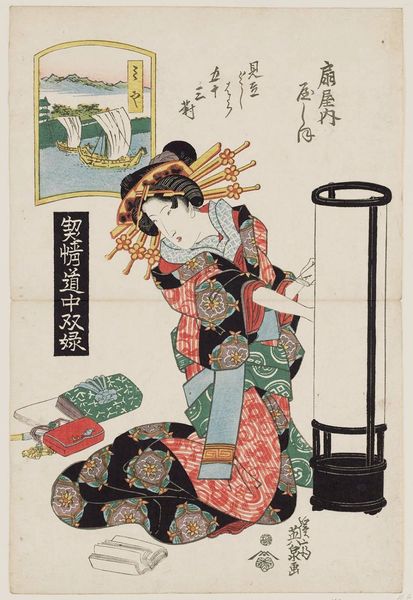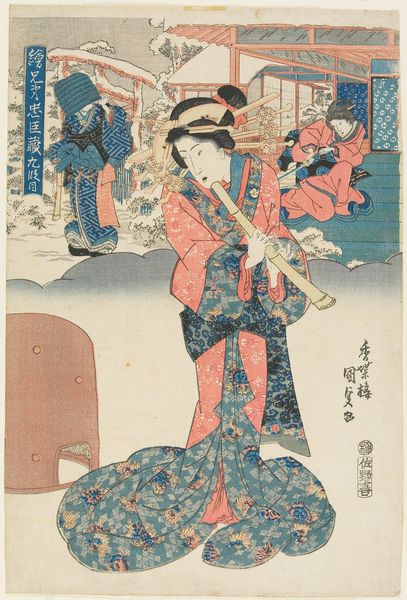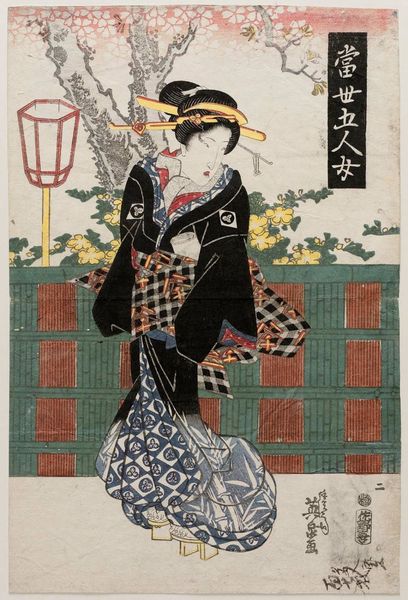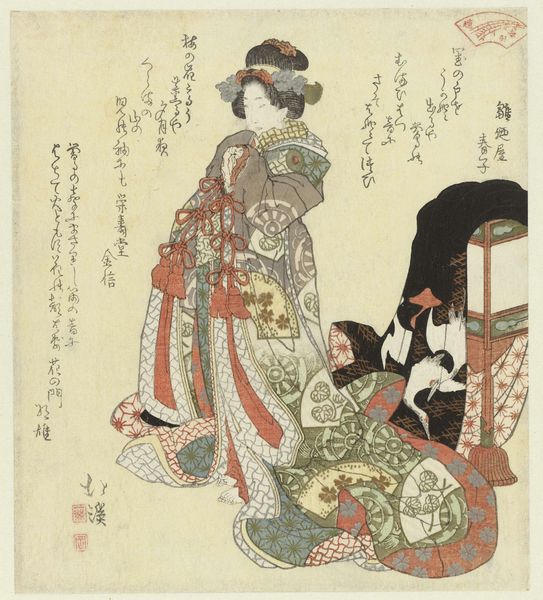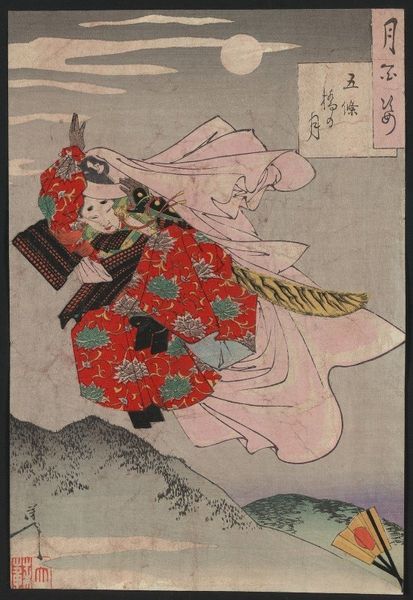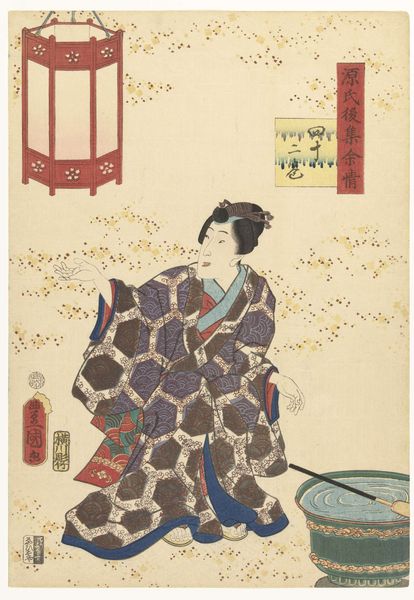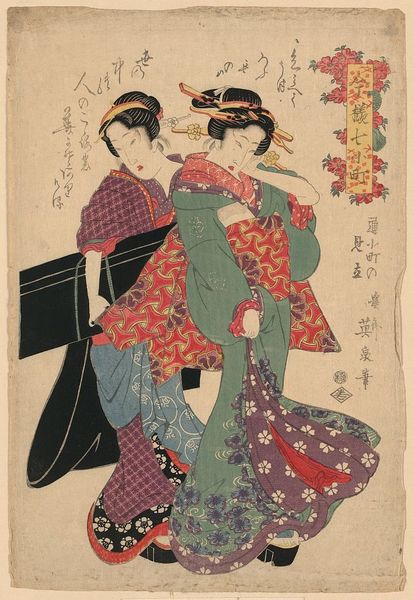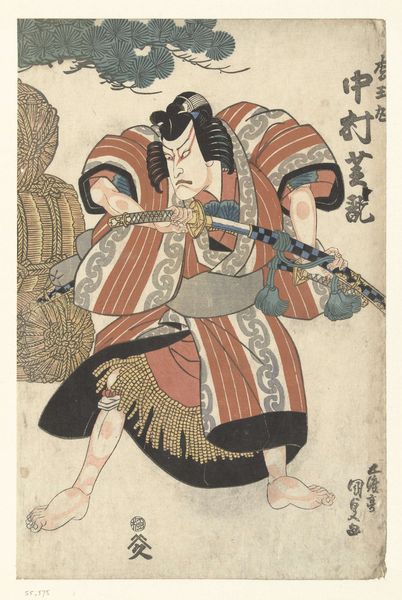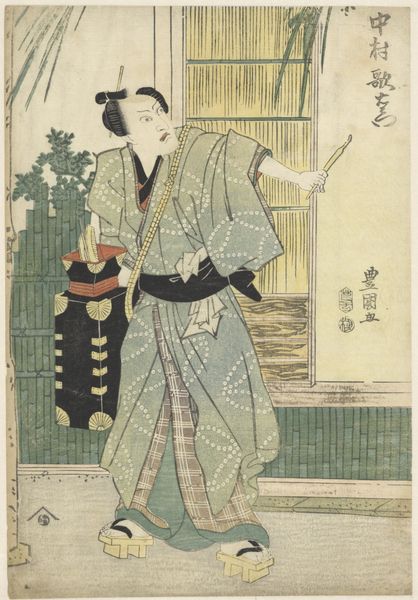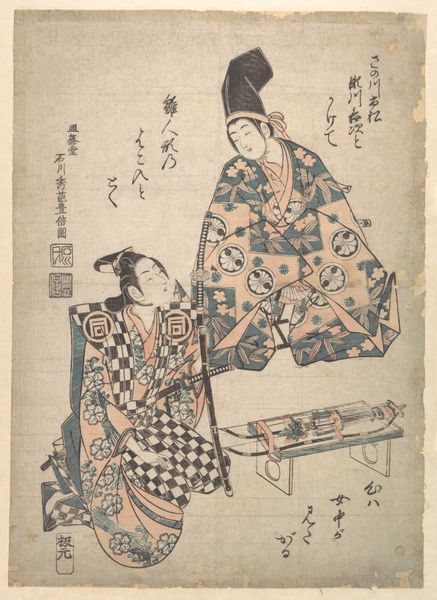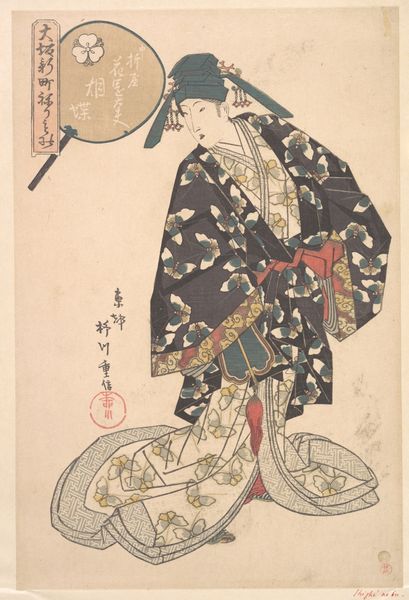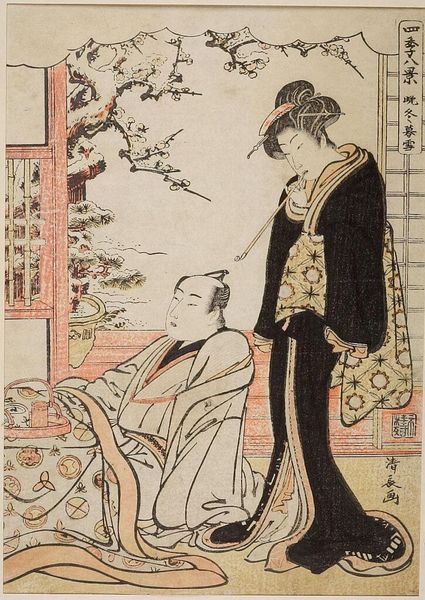
#
toned paper
#
childish illustration
#
personal sketchbook
#
historical fashion
#
wedding around the world
#
sketchbook drawing
#
watercolour illustration
#
cartoon carciture
#
sketchbook art
#
bridal fashion
Copyright: Public domain
Editor: We're looking at "Woman in Snow" by Keisai Eisen. It appears to be a woodblock print. There's a delicate, almost melancholic feeling to it. The woman's elaborate kimono and the falling snow create an intricate visual texture. What are your initial thoughts when you examine its visual properties? Curator: My focus immediately rests upon the calculated deployment of line and form. Notice how the artist has delineated the figure with a precision that simultaneously defines and flattens her form against the backdrop. Consider how the snow isn't just 'snow' but rather a carefully arranged pattern, contributing to the overall textural complexity. Editor: It’s interesting that you focus on the flattening – I was noticing the details that seemed to add depth, like the layering of the kimonos and the subtle shading. Curator: While layering does indeed contribute a certain complexity, observe that this layering operates more as a sequence of planes than a recession into true three-dimensionality. The artist consciously avoids illusionistic depth, preferring a spatial arrangement dictated by compositional balance and graphic clarity. It forces us to contemplate the pure structure. Editor: So, you're seeing the detail, but interpreting it as contributing to a formal pattern, not necessarily to a sense of realism. The snow almost abstracts the scene further. Curator: Precisely. We might even say that the subject matter itself becomes secondary. Look how the cascade of the lines directs the gaze, and the subtle, almost asymmetrical balance contributes to the dynamic tension of the composition. It encourages one to question how meaning is conveyed purely through visual elements. Editor: It shifts my perception quite a bit, focusing less on who she is or what she's doing and more on how the elements of the artwork function together. Curator: Yes. To move away from narrative expectation is central here. Now can you reflect on the forms that carry significance, and what relationship exists between all the aspects?
Comments
No comments
Be the first to comment and join the conversation on the ultimate creative platform.
